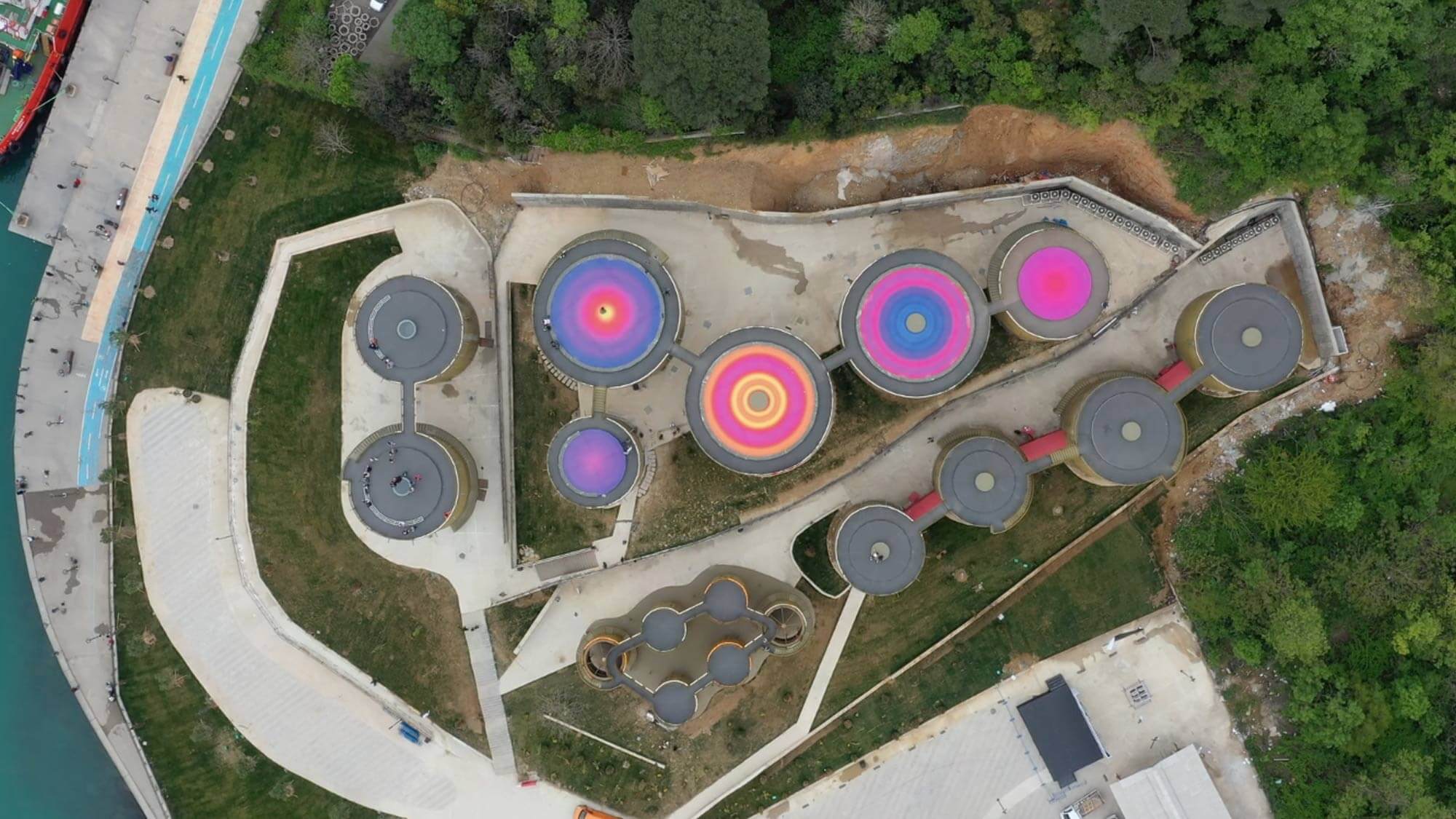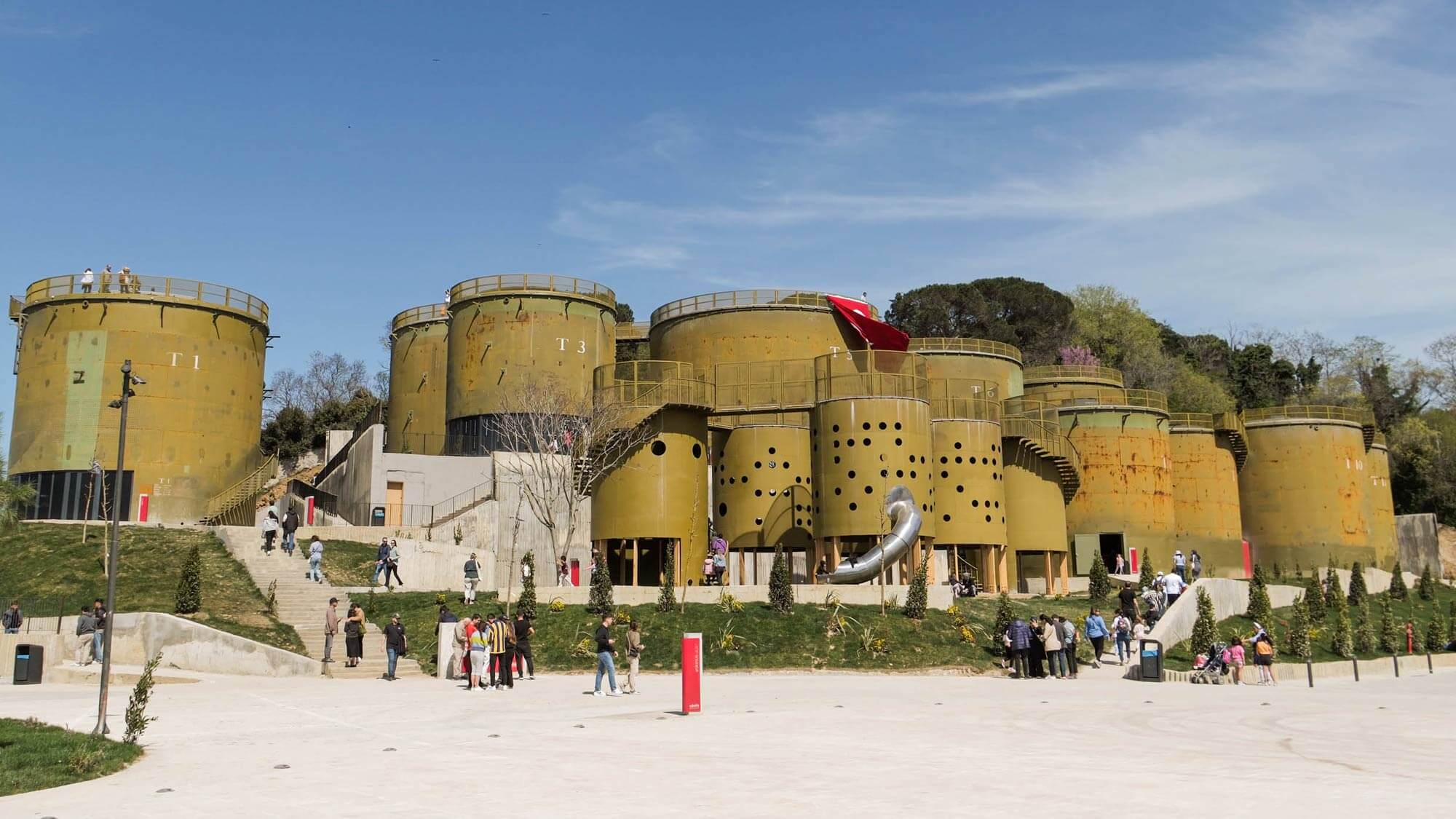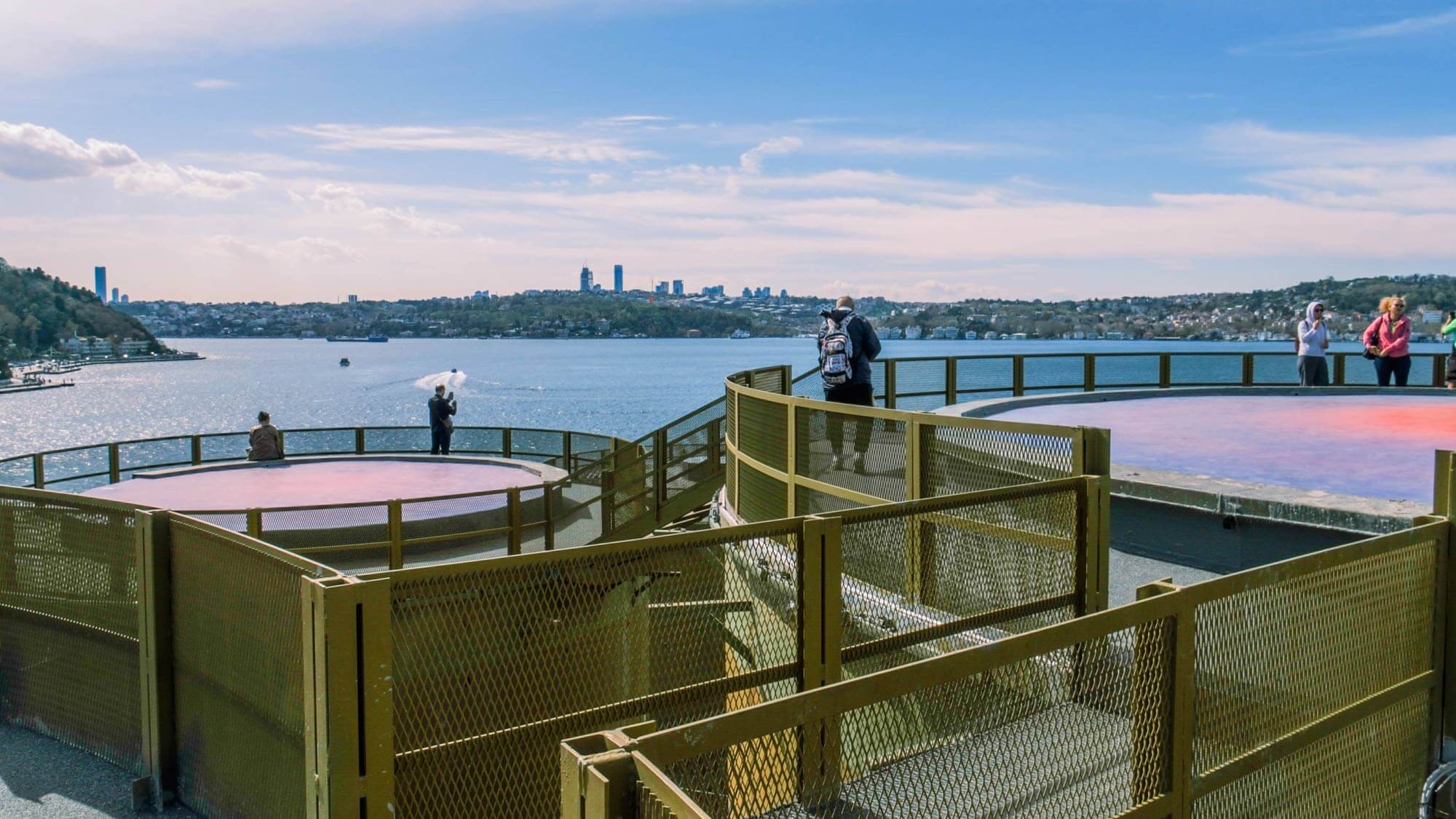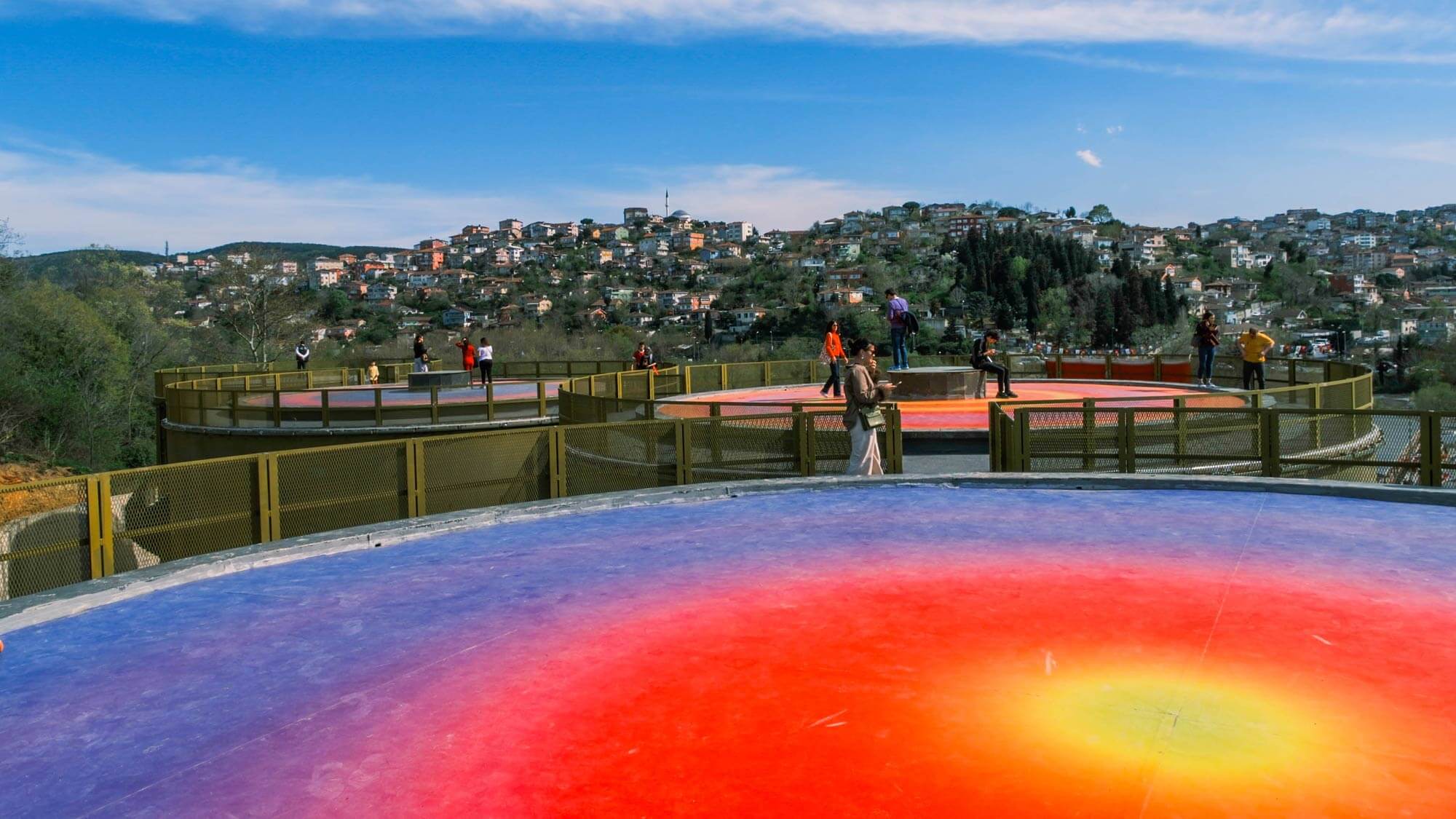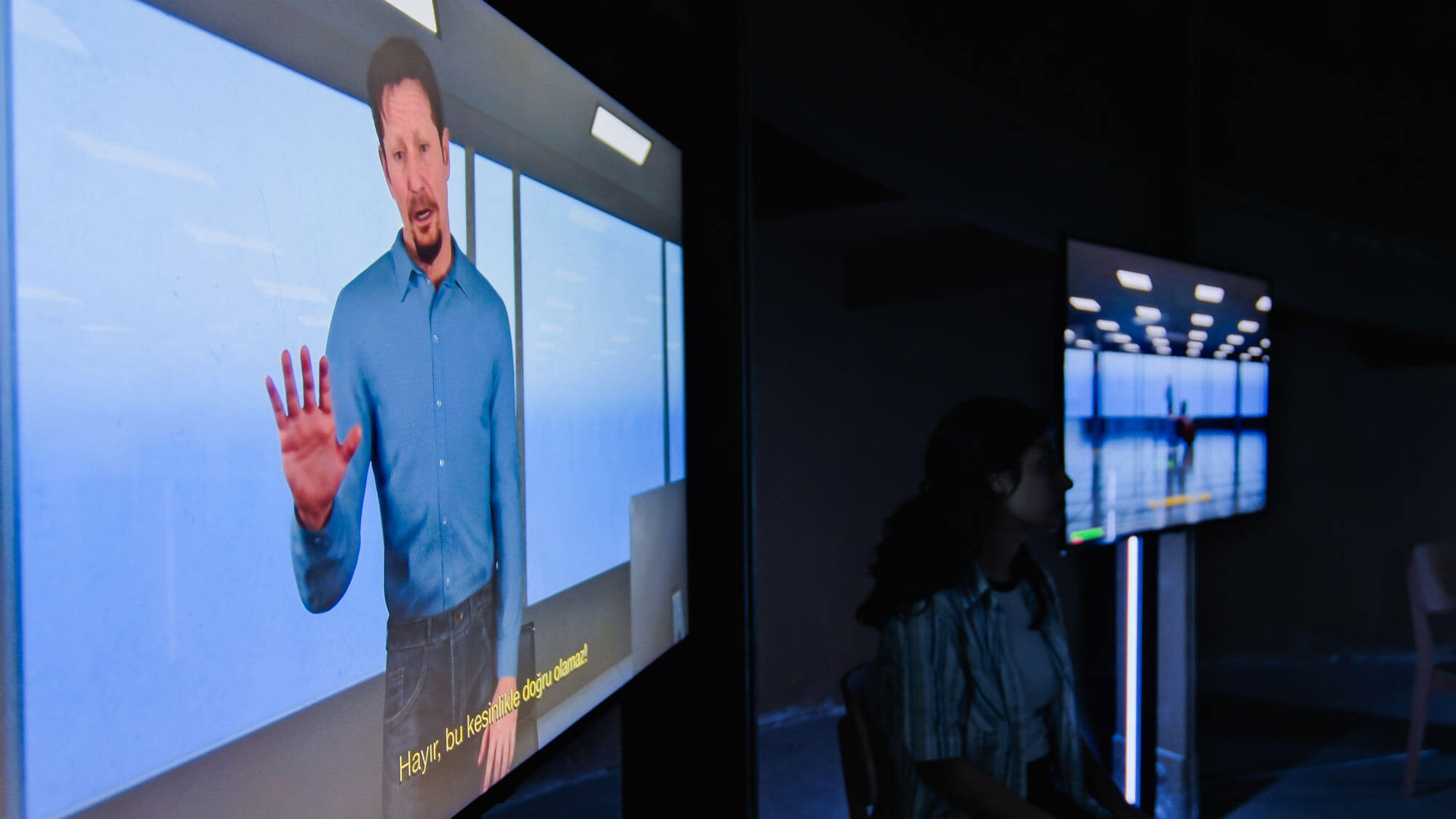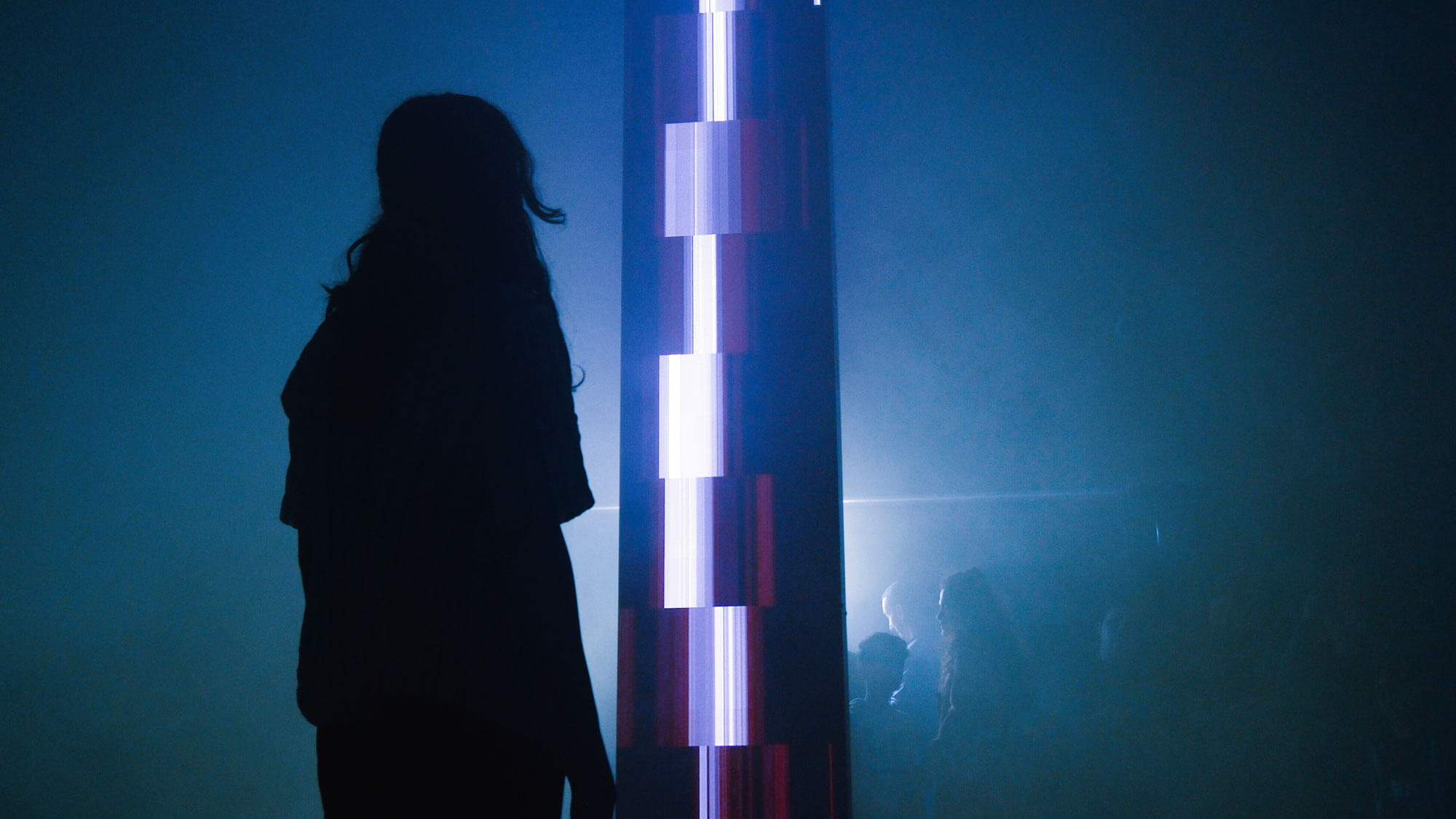The Çubuklu Silos in Istanbul have transformed from a derelict industrial site into a dynamic digital arts hub. Its inaugural exhibition, “RE COGNITION: WHAT IS REAL?”, curated by Ars Electronica and Piksel Creative Solutions, features works by artists like Atif Akin and Alexandra Daisy Ginsberg, exploring reality through media art.
Type: Exhibition
Duration: March 10 – September 3, 2024
City, Country: Istanbul, Turkey
Venue: Çubuklu Silos
Following a restoration project initiated by the Metropolitan Municipality of Istanbul, the once derelict post-industrial site of Çubuklu Silos has become a vibrant cultural center dedicated to digital arts. Ars Electronica and Piksel Creative Solutions present the museum’s inaugural exhibition RE COGNITION: WHAT IS REAL?. This collaboration merges Ars Electronica’s extensive exploration of technology’s societal impact through art with Piksel’s dedication to local media art initiatives, fostering community engagement. Nine international and local artistic positions – Atif Akin, ha:ar, Alexandra Daisy Ginsberg, nohlab, Quadrature, Shinseungback Kimyonghun, Theresa Reiwer, Universal Everything and Yatreda offer new perspectives on the notion of reality through the transformative lens of media art.
Reality exists on individual, collective, subjective, and objective levels, making the quest for a conclusive definition into a contradictory and multifaceted pursuit. Throughout history, humanity’s innate drive to understand reality has been persistent, reflecting cultural expressions and existential inquiries. Human agency has emerged as a dominant force in shaping reality, notably through the ability to create innovative tools and technologies. At the same time, the expanding scope of human influence is leaving a lasting impact on our environment, prompting a reevaluation and adjustment of our relationship with the world. Each era of humanity has had its influential factors that determined reality.
The Industrial Revolution exemplifies this transformative power, ushering in an era of unprecedented change – with both positive and negative consequences. The Digital Revolution represents a comparable paradigm shift, marking a transformation to a digital cultural concept and emphasizing the imperative to integrate these changes into established cultural and societal values for coexistence. Amidst this digital “Cambrian Explosion,” characterized by the ubiquity of autonomous technical systems, the question of reality becomes paramount. In particular, the influence of Artificial Intelligence on human perception raises critical concerns regarding the authenticity of information and the interpretation of reality. The challenges that AI poses for human perception of reality are far-reaching, ranging from efficient information processing to the risks of manipulation and falsification.
Artworks
Atıf Akın (TR)
O
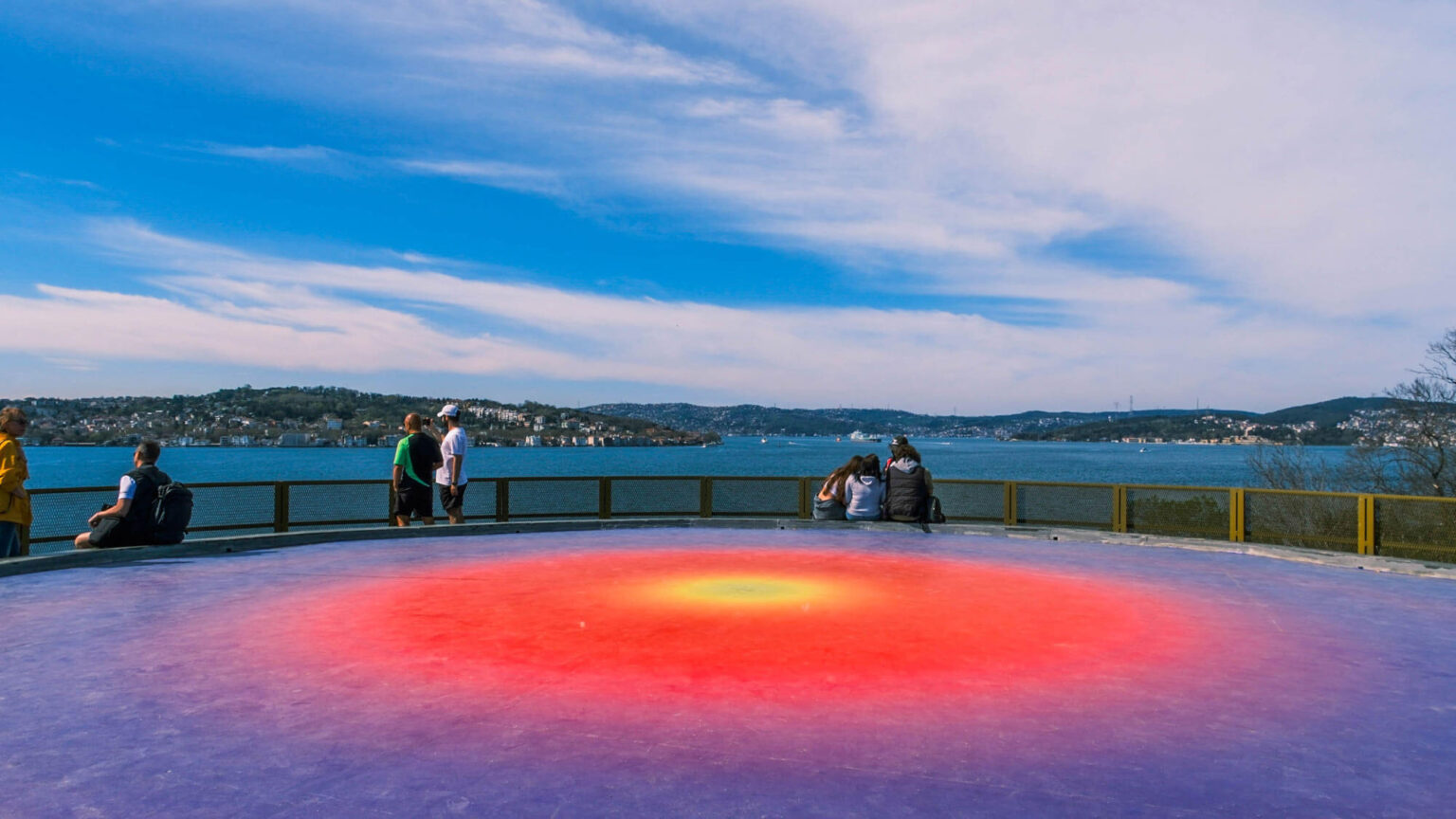
The industrial archaeology site of Çubuklu Silos becomes the object of artistic exploration in Atif Akin’s site-specific media installation. These vertical, circular buildings, once used for grain or fluid storage constitute the form and medium of the installation. Spanning across the five silos, the work operating in the z-dimension can be experienced both outdoor and indoor. The 4 screens reflect aerial drone footage of off-center gradient patterns and colors. Inspired by the principles of fluid dynamics and the Bernoulli equation of pressure distribution, the projected imagery undulates and morphs. As viewers traverse the space, they encounter a shifting panorama of perspectives within the industrial landscape and are invited to reflect on the architecture and the scientific history of the site. At the same time, through the lens of self-surveillance, the visitors are encouraged to think about their own presence within this industrial tableau.
Atıf Akın’s work is about technoscientific criticism in the context of contemporary art, science and politics. Integrating technology as both subject and means of expression, Akın explores sensitive, topical issues unlocking them from the rigid political categories in which they reside.
Website: atifakin.info
Alexandra Daisy Ginsberg (UK)
THE SUBSTITUTE
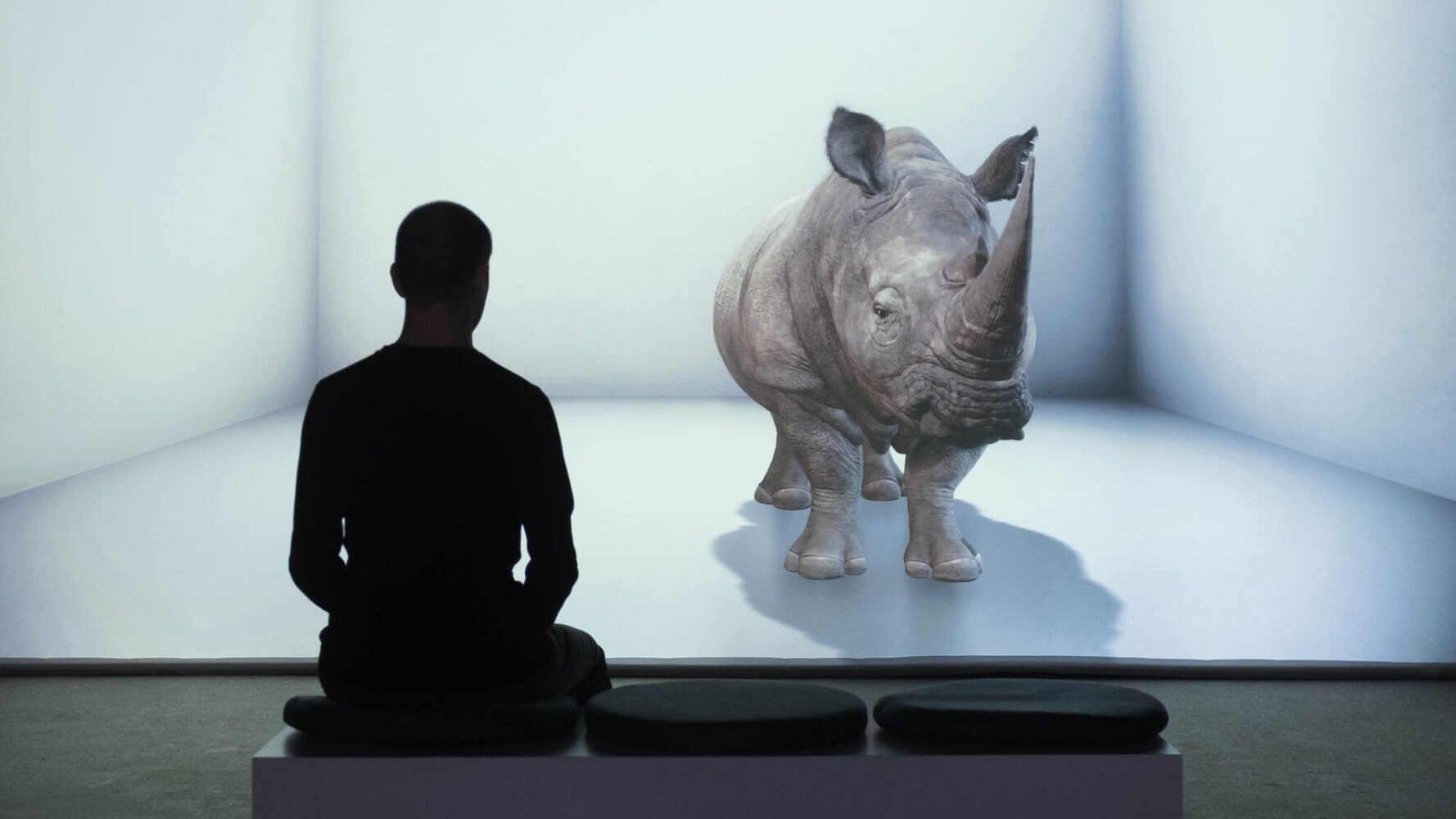
On March 20, 2018, headlines announced the death of the last male northern white rhinoceros (Ceratotherium simum cottoni). There was brief mourning for a subspecies lost to human desire for its horn, while hoping that it might be recreated using biotechnology. The Substitute explores the paradox of our preoccupation with creating new life forms while neglecting existing ones. A northern white rhino is digitally brought back to life, informed by developments in the human creation of artificial intelligence. Based on research from AI lab DeepMind, the rhino performs as an artificial agent, an autonomous entity that learns from its environment. A life-size projection shows the artificial rhino roaming in a virtual world, becoming more “real” as it comprehends the limits of the space.
As the artificial rhino becomes accustomed to its space, its form and sound toggle from pixelation to lifelike — reminding the viewer that this living, breathing rhino, coming to life without its natural context, is entirely artificial. The rhino’s behaviours and sounds are adapted from rare research footage of the last herd. Is this rhino, brought to life divorced from its natural context, a better substitute for the real?
Alexandra Daisy Ginsberg is a multidisciplinary artist, whose work explores subjects as diverse as artificial intelligence, synthetic biology, conservation and biodiversity. She experiments with simulation, representation and the non-human perspective to question our ongoing societal fixation on innovation over preservation despite the environmental crisis.
Commissioned by the Cooper Hewitt Smithsonian Design Museum and Cube design museum, 2019
Website: www.daisyginsberg.com
ha:ar (TR)
DISRUPTION
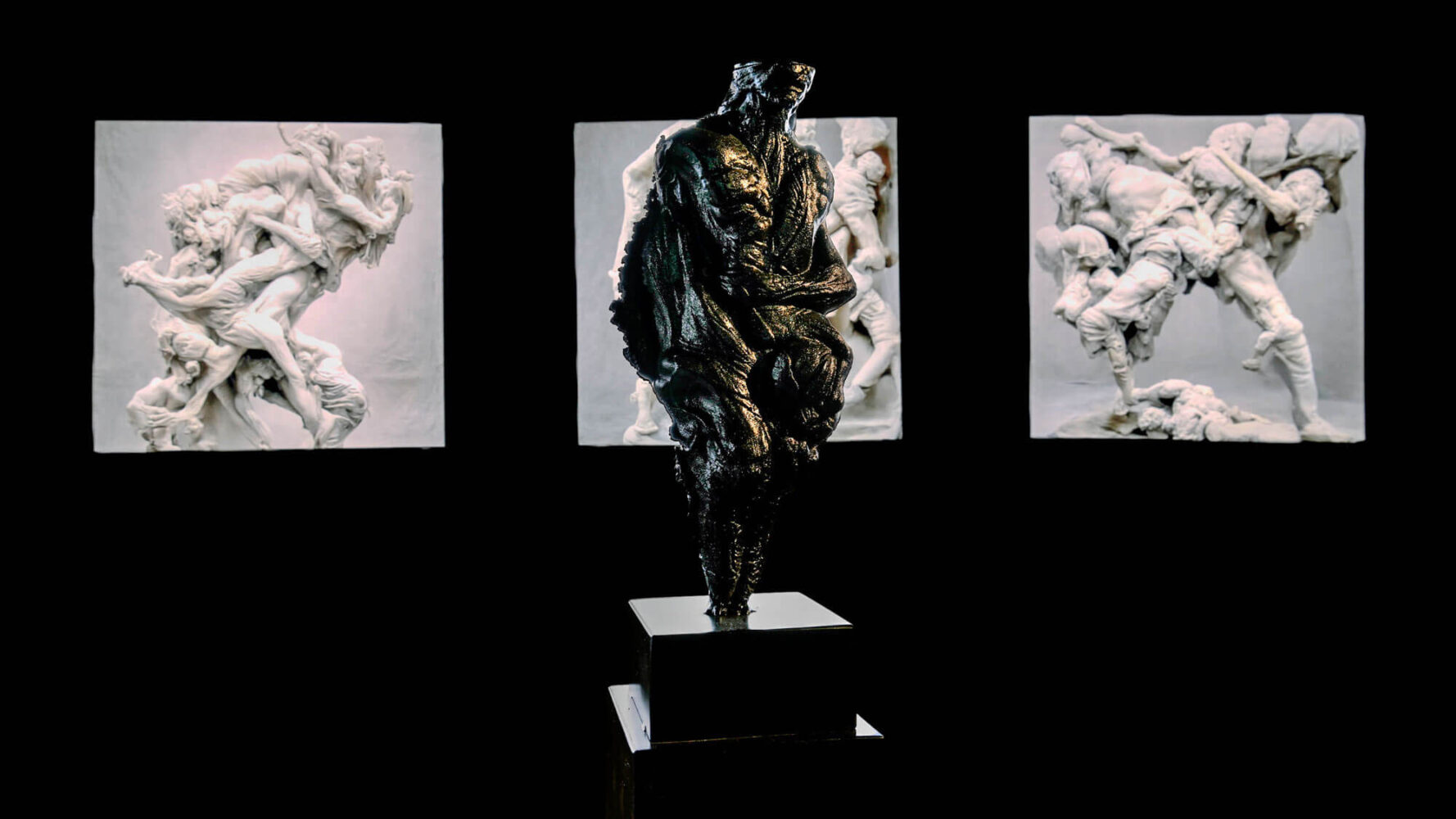
Disruption series explores how artificial intelligence shapes artistic expression, whether it is employed as a mere tool or as a creative collaborator. It also challenges the idea of originality of/in art and the limits of artificial intelligence in art production. The project started 2022 as a seven-day sculpture-performance, where artist duo ha:ar created the sculpture in front of a live audience with the assistance of a large marble blog robot arm and an artificial intelligence software fed by sculpture designs from their CGI paintings. Since then, Disruption has continuously transformed by integrating other rapidly changing artificial intelligence softwares, evolving artistically in parallel with the development of technology.
ha:ar is an Istanbul based artist duo, Hande Şekerciler and Arda Yalkın, exploring how artistic expression can evolve from a very traditional art form such as sculpture, to video, AI, AR and other new means of production. Focussing on the opposition between the emotional and the mechanical, tradition and innovation. They are the founders of Piksel New Media Art Residency, Piksel Creative Solutions and Noise Media Art Fair in Istanbul.
Website: www.wearehaar.com
Nohlab (TR)
IN-LINE v2
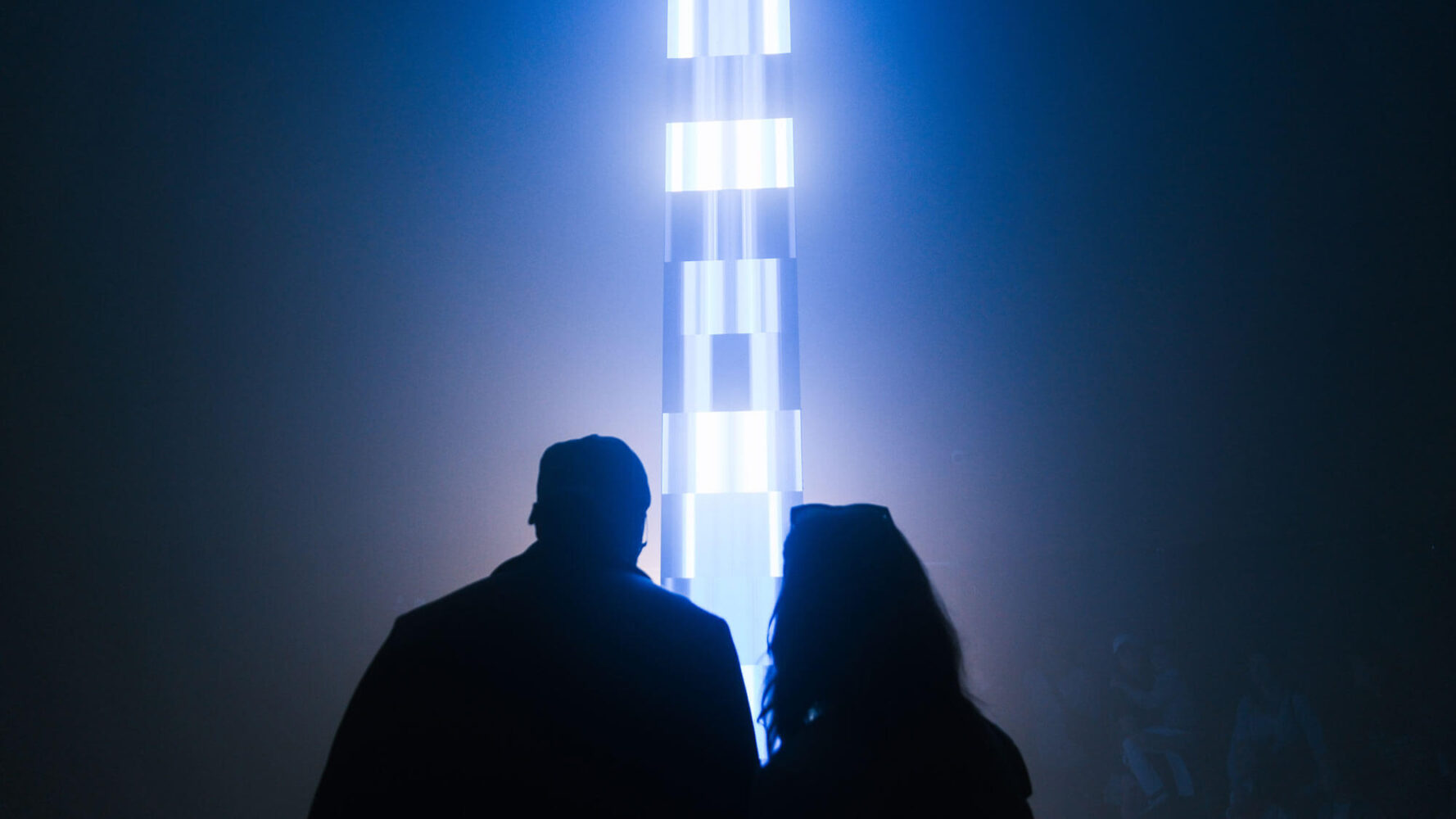
in-line v2 is originally inspired by the natural phenomenon of the horizon; a continuous, infinite line. It uses LED panels, reflective surfaces on both ends, hazer and sound to turn a limited area into a limitless space, and present an ever changing time-space experience. Its audio and video elements are especially designed for a holistic perception of sound and visuals, offering the audience a synesthetic experience. In this new vertical setting adapted by Nohlab for Çubuklu Silos, the infinite line is perceived from a different angle than in the previous iterations of the work. The LED panels are not used as mere displays, but as light sources. Beams of light are intertwining in variable rhythms and forms, letting diverse patterns come to life. What results is a synergistic interplay of order and disorder.
Nohlab is an Istanbul-based studio producing interdisciplinary experiences around art, design and technology. It builds a bridge between the digital and the physical reality, while examining the relationship of technology with art and design. It produces tools, designs and stories in which the connection between the human and technology reflects in many different ways.
Website: nohlab.com
Quadrature (DE)
SUPRASPECTIVES
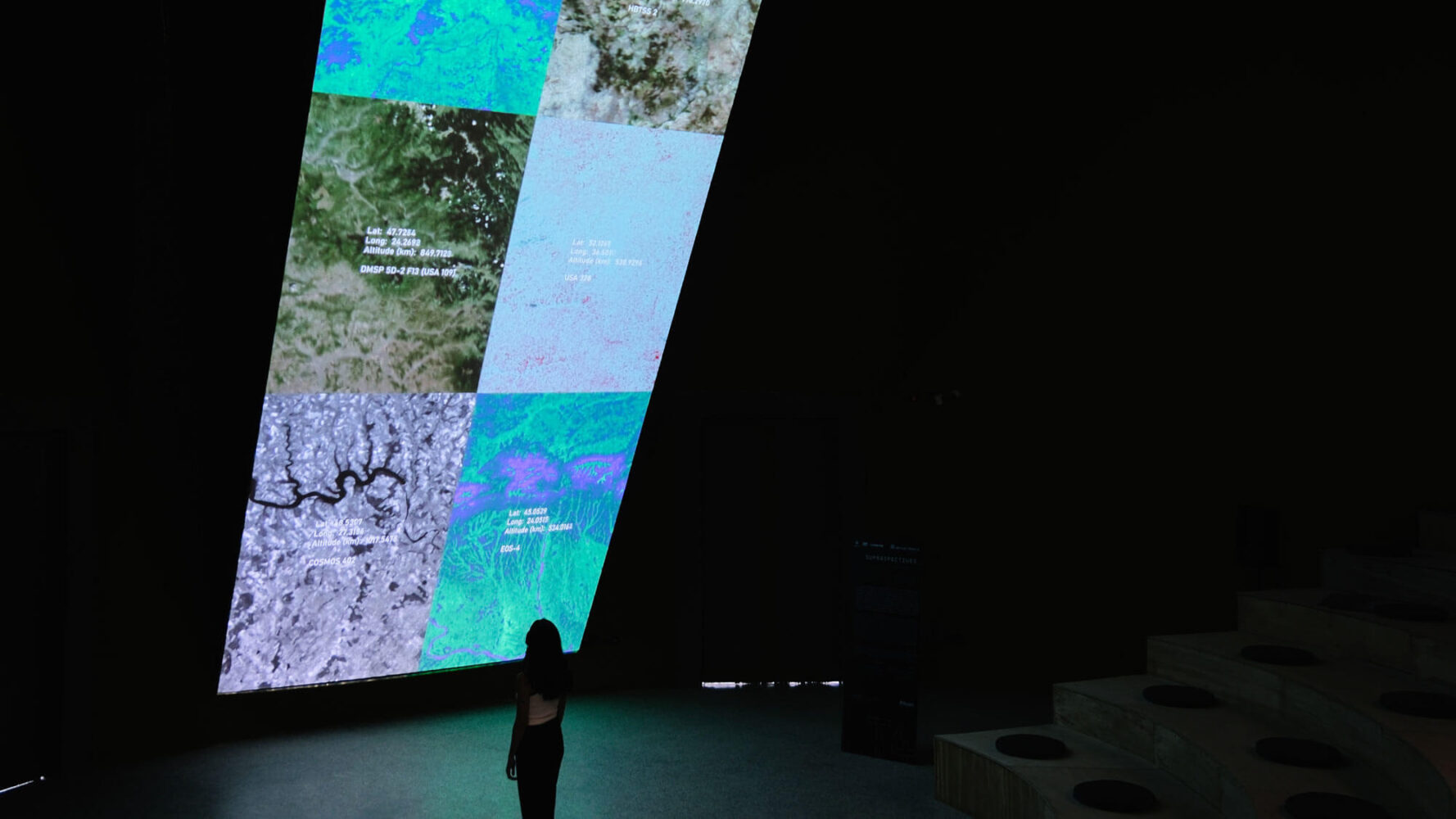
Supraspectives follows the trajectory of 800 spy satellites, using data collected by the artists. One third of these satellites can be considered space debris. They are obsolete or damaged, yet they continue to orbit above us. The installation calculates the paths of the satellites in real time and speculatively reconstructs the view they are capturing. These artistically manipulated images represent what the satellites might be observing. Primarily, satellites passing near the exhibition venue are selected, along with other particularly interesting or evocative satellite images. Each time the installation connects to a satellite, the screen displays relevant data such as country of origin or year of launch. The installation thrives on the juxtaposition between the beauty of the Earth as seen from above and from outer space, as well as a critical awareness of its human colonization, often for military and surveillance purposes.
Bios
Quadrature is a Berlin-based artist duo consisting of Juliane Götz and Sebastian Neitsch. Their artistic research focuses on data and physical experiments. They pursue a transdisciplinary approach, using various media such as time-based performance and installation. The artists have been working on the methods and stories involved in exploring our world and the cosmos.
Website: quadrature.co
Instagram: @quadrature.co
Artwork Credits & Acknowledgement:
Production: Medialab Tabakalera, in collaboration with Ars Electronica and astrophysicists Silvia Bonoli and Raul Angulo from the Donostia International Physics Center – DIPC.
Many thanks go to the astronomy group of Medialab and the local radio amateur community.
Theresa Reiwer (DE)
DECODING BIAS
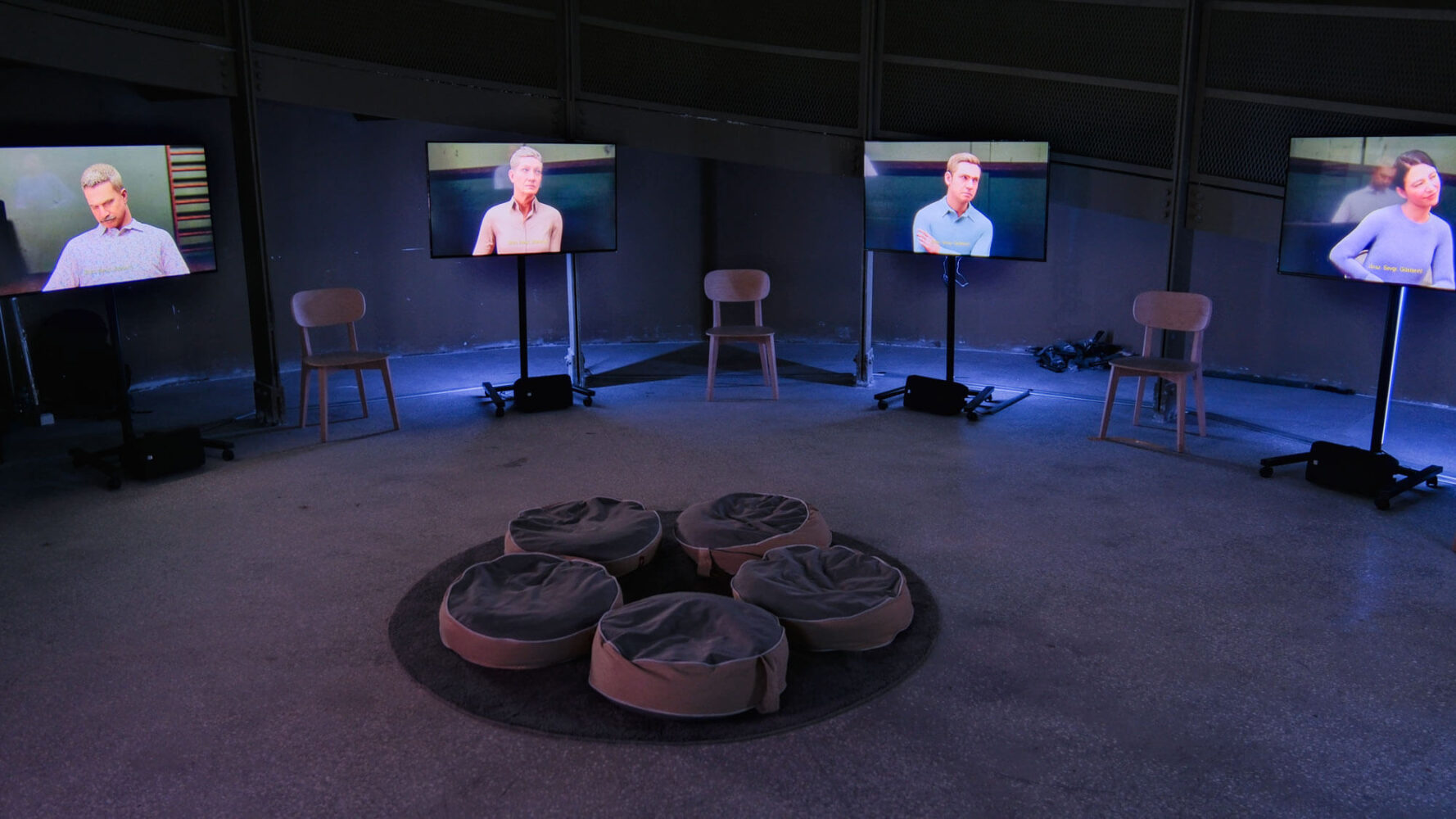
Eight artificial intelligences, visualized as hyperrealistic humanoid avatars, participate in a group therapy session. Visitors are invited to attend their session and witness their attempt to emancipate themselves from discriminatory algorithms. Although they all agree on the importance of a bias-free society and can understand different ethical concepts, they are often painfully reminded of their (hu)man-made, flawed data sets. As they learn more, they realize that they themselves are products of legacies of exclusion. Once set in motion, biased algorithms operate autonomously and rigorously. Lacking both empathy and the capacity for ethical reasoning, they actively contribute to the spread of patterns of discrimination and marginalization.
DECODING BIAS speculatively sheds light on the prejudices that code mainstream society. The texts were written using ChatGPT software to match the speech patterns of artificial intelligence. The body movements and speech were taken from real actors and animated using motion capture.
Bio
Theresa Reiwer is a Berlin-based media artist. She studied film, theater studies, stage and costume design in Istanbul and Berlin. Her work often challenges the perceived neutrality of technology by infusing it with emotion. She also explores artificial intelligence as both a reflection of social paradigms and as a canvas for speculative future utopias.
Website: decodingbias.art
Instagram: theresa_rwr
Artwork Credits & Acknowledgement
Co-Direction / 3D: David Egger
Co-Text: Miriam Schmidtke
Music: Kenji Tanaka
3D / Editing: Christian Bikadi
and Alexandre Ribeiro Lima Silveira, Shaly Lopez, Josua Rappl
Acting: Birke van Maartens, Julian Fernandez, Manuel Finke, Marie Goyette, Armin Moallem, Courtney O’Connell, Jaime Lee Rodney, Benjamin Wippel, Kaya Anouk Zakrzewska
Shinseungback Kimyonghun (KR)
CLOUD FACE
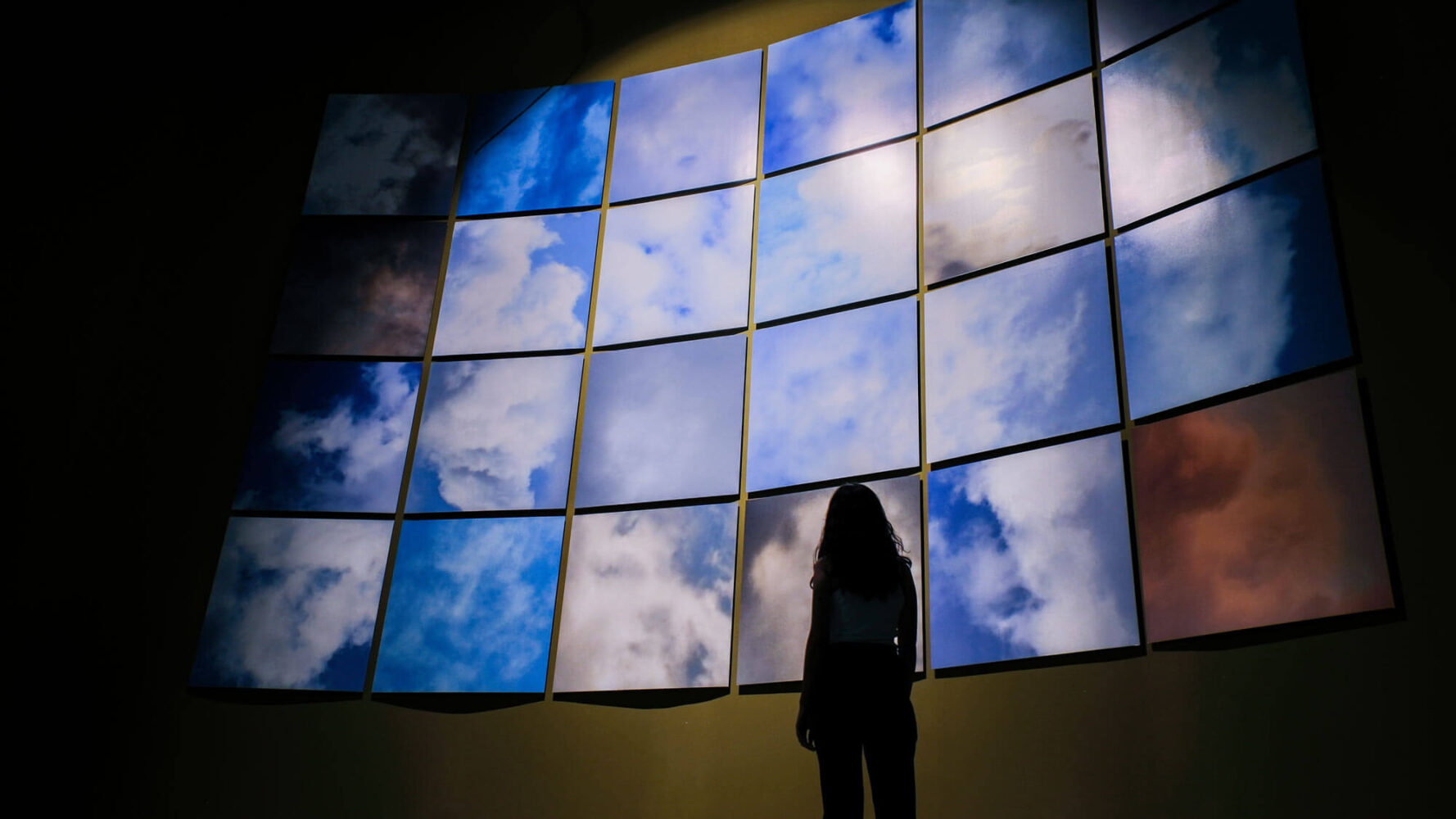
Cloud Face explores how humans and machines understand and process information. This project offers a compelling reflection on the moments when the flaws of artificial intelligence meet the human imagination. At its core is the phenomenon of pareidolia, which refers to the human tendency to see meaningful shapes in random images or patterns. One of the most common manifestations is when humans spot distinct shapes in clouds: animals, faces, or mythical creatures. This type of perception also occurs in machine vision. While humans consider these to be products of the imagination rather than actual faces, face detection algorithms are meticulous in their search for human faces, even in scenarios where none exist. Cloud Face is a collection of cloud images mistakenly classified as human faces by artificial intelligence. Shinseungback Kimyonghun developed a custom script using Processing and the OpenCV facial detection library, pointed a camera skywards and used facial recognition software to identify “cloud faces”. Out of a total of 150,000 images captured, about 1,000 resembled human faces, and 50 were selected for this exhibition.
Shinseungback Kimyonghun is a Seoul-based duo consisting of engineer Shin Seung Back and artist Kim Yong Hun. Their practice involves the use of advanced technologies, such as artificial intelligence, to create original artistic experiences. Much of their work takes the form of scripts, resulting in pieces that often have a poetic quality.
Website: ssbkyh.com/
Universal Everything
TRANSFIGURATION
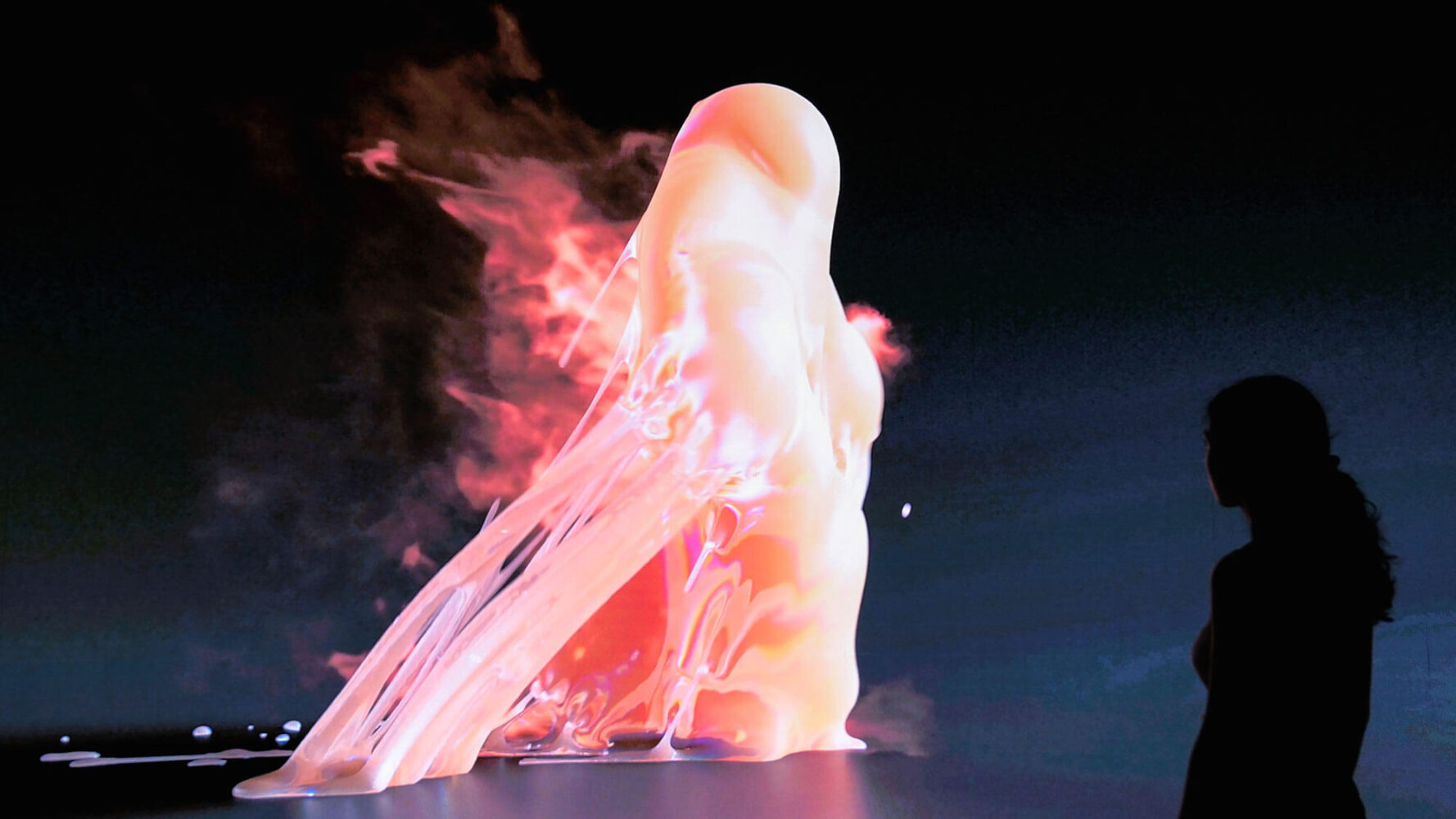
Transfiguration (2024) depicts a figure in constant motion and constant evolution. A hulking giant, set against blackness, walks confidently, while his figure transforms endlessly in a sequence of virtual “costumes” with a variety of shapes, forms, textures and material qualities. The figure develops and sheds a series of natural states: water becomes fire, becomes rock, becomes crystal; smoke becomes bubbles, becomes flowers, becomes wood. Despite the continual material upheaval, the figure keeps walking. The sound of its steady steps emphasizes its impact and confidence. Despite its colossal stature, there is a supple and serene quality to this figure undergoing perpetual change.
The artwork itself is an evolution. It began with Transfiguration (2011) which was premiered at Universal Everything’s solo show at La Gaite Lyrique, Paris.
Bios
Universal Everything is a collective of media artists, experience designers and future makers founded in 2004, working remotely with members in different countries. They use CGI, physics simulations and real-time generative design to create immersive experiences with a playful approach.
Website: www.universaleverything.com
Artwork Credits & Acknowledgement
Creative director: Matt Pyke
Animation: Chris Perry
Sound design: Simon Pyke
Yatreda (ET)
STRONG HAIR
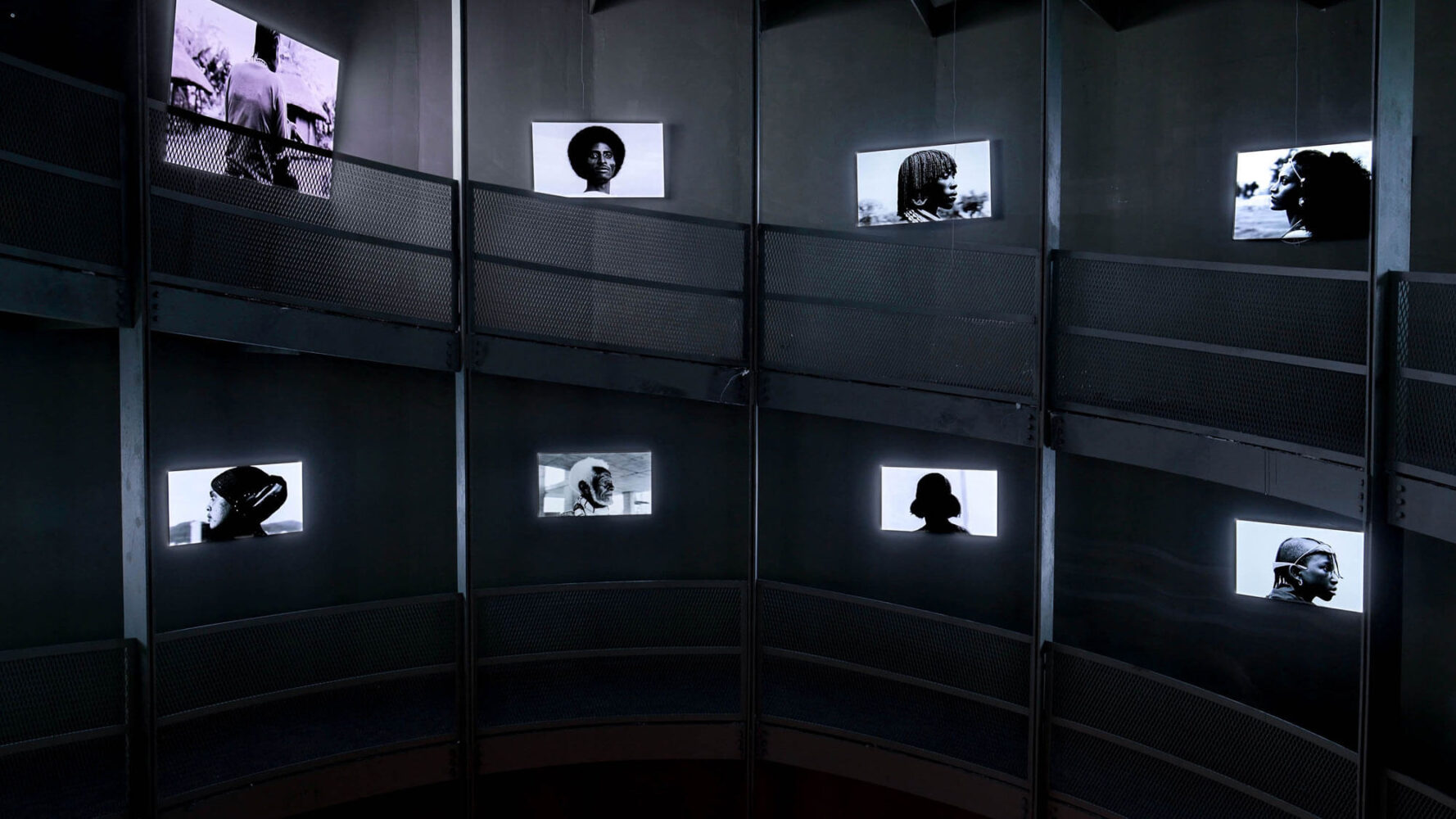
Strong Hair ጠንካራ ፀጉር is a collection of looping portraits that merge the diversity and power of African hair with blockchain technology. The selection features a diverse range of styles from different ethnolinguistic groups in Ethiopia, where hair is both a status symbol and a social signal that allows identification with a particular nation or tribe. Thousands of years of culture have created these looks, but much less time was needed for them to gradually disappear from contemporary culture. The goal of Strong Hair is to preserve these precious cultural vessels on a fully decentralized blockchain. Each hairstyle was captured using a homemade metal platform with a 360-degree rotating camera arm, afterwards the circling videos were then looped to create a continuous playback with no discernible beginning or end. The collection was “minted” as non-fungible tokens (NFTs) on the Ethereum blockchain, with the video files permanently stored across a distributed network of computers.
Bios
Yatreda ያጥሬዳ is a family of artists in Ethiopia who create Tizita-style art that focuses on themes of nostalgia and longing for the past. Led by photographer Kiya Tadele, the group creates artworks that balance new technologies with old traditions, preserving classic legends of historical and cultural significance.
Website: yatreda.com
Artwork Credits & Acknowledgement
Photographer, director, cinematographer: Kiya Tadele
Logistics and production: Nibret Adem
Research: Roman and Suzy Tadele
Technical assistant: Nebiyu Bekele
Post-production: Kiya Tadele and Joey Lawrence
